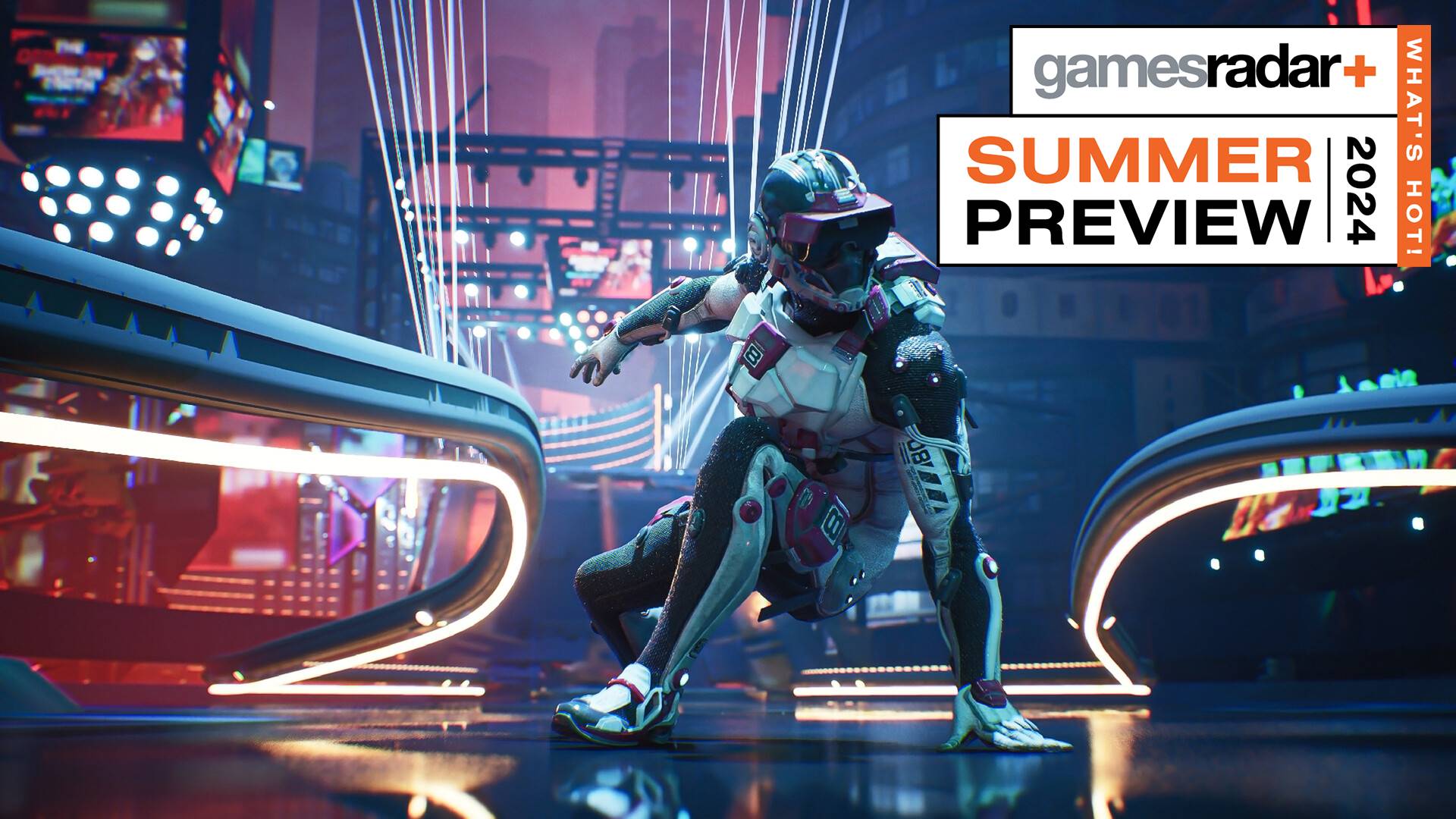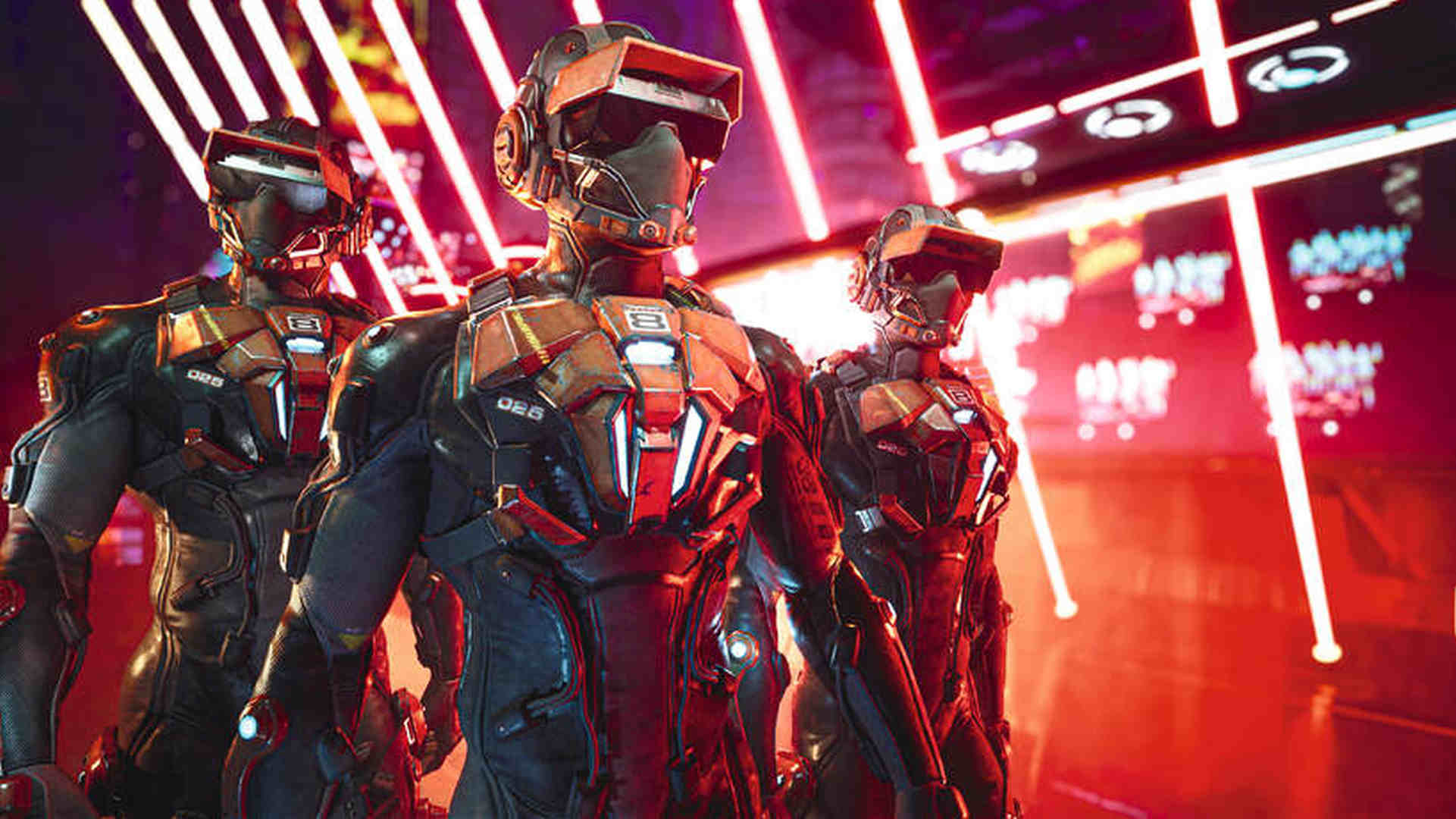
I'm not trying to toot my own horn, but it's important to this article that I note I'm very good at Mario Kart 8. A series of very competitive, very heavy-drinking tournaments through my early 20s has left me so adept that playing casually is now almost a waste of everybody's time - I'll be so far ahead that nothing short of two dozen blue shells is likely to hold me back.
I realize that this might come across as terribly arrogant, but I tell you this not to garner any particular praise, but to emphasize just how badly Deathsprint 66 kicked my butt.
Stall your engines
While Mario and pals are simply gearing up for some (theoretically) low-stakes karting, Deathsprint 66 is a different beast entirely. Set in a world where humanity has largely fled cities ravaged by climate change, those fallen metropolises have been turned into dangerous race tracks for this chaotic bloodsport. Slaloms and hairpins complete with rail grinds and spinning blades punctuate straights filled with hidden pits or swinging obstacles. Even if you can get a decent lead up, a buzzsaw-shaped alternative to Mario Kart's red shells could simply cut you in half.
For all those hazards, it doesn't take long before I'm starting to learn Deathsprint 66's tracks. There's an impressive degree of mastery to make the most of. I'm not just learning the fastest routes, but how to optimize Deathsprint 66's drifting system, or how to lean into specific rail grinds to ensure that they don't feed me straight into a bank of blades. Mess up a turn in Mario Kart and you might get an embarrassing assist from Lakitu, but get your angle wrong here and you'll be cut to pieces.
That was a fate that befell me an unfortunate number of times, not least because of Deathsprint 66's sheer speed. The claustrophobic nature of these fallen urban environments tunnels you forward, to the extent that you're going almost dizzyingly fast within seconds of a restart. Throw obstacles into the mix, and the whole thing becomes frantic, races deadlier and twitchier than anything Mario Kart has ever thrown at me.

And that's before I even account for the other players. In my hands-on demo, I was pitted against AI that Deathsprint's developers told me was still slightly overtuned, but meant that I got what felt like a pretty authentic experience. Jostling with the pack is deadly, other players capable of not just trading paint but giving you a full-fledged shove if you get in their way. In a race where a single misstep can be deadly, even that momentary overbalance can send you careening off your intended path and straight towards your untimely demise. Fast and aggressive, the AI I played against didn't feel a million miles away from how a pack of experienced human players might interact with both these tracks and the other racers around them.
A few races deep and running out of time in my demo session, I'd yet to get within touching distance of a podium finish. I was compelled to try one final run. Settling ever closer to the flow state that Mario Kart has helped me become so familiar with, I emerged ahead of the pack, and managed to hold onto my lead for a full lap. The AI never left my tail, however, and eventually, that single misstep caught up to me. Taking a slightly wider line than I intended, another racer closed the distance behind me, gave me a shove in the back, and sent me flying to my death. Without enough time to close the gap once I returned to the track, I stumbled, devastated, into fifth place. It was the kind of performance that I'd have been furious with if it had been in one of Mario Kart tournaments, but here, I took an unexpected pride in my efforts. Brutally fast, but also brutally, well, brutal, Deathsprint 66 takes no prisoners, and I was simply pleased to emerge (relatively) unscathed.
Weekly digests, tales from the communities you love, and more
Get some practice in with your list of the best racing games.

I'm GamesRadar's Managing Editor for news, shaping the news strategy across the team. I started my journalistic career while getting my degree in English Literature at the University of Warwick, where I also worked as Games Editor on the student newspaper, The Boar. Since then, I've run the news sections at PCGamesN and Kotaku UK, and also regularly contributed to PC Gamer. As you might be able to tell, PC is my platform of choice, so you can regularly find me playing League of Legends or Steam's latest indie hit.


